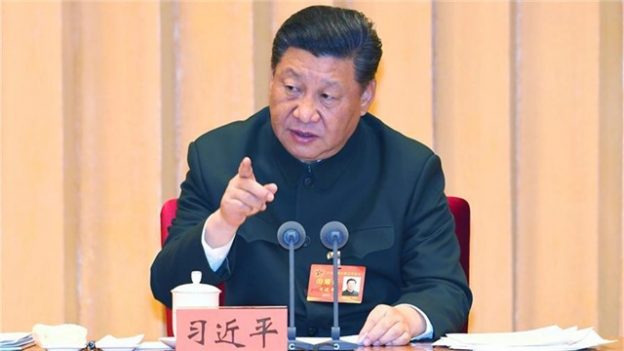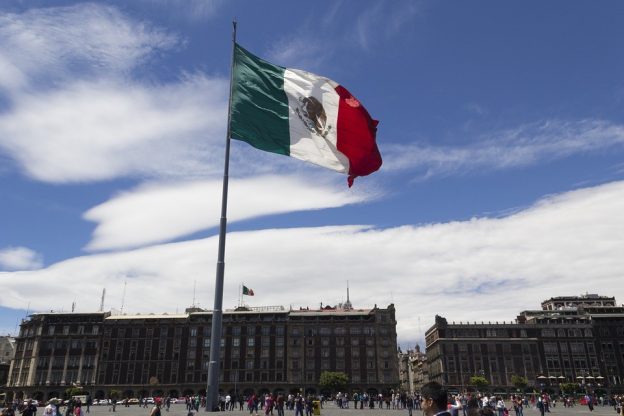It would be a mistake to assume that any conflict with China would be restricted to Asia.
China’s Military Presence in Latin America
A Foreign Policy study explains that: “The escalation of Chinese influence in Latin America is reflected in the number of nations that have swapped recognition from Taiwan to China, according to Ana Quintana, an analyst with the Heritage Foundation. This group now includes El Salvador, Costa Rica, Panama, and the Dominican Republic. The goal is not just “sticking it to the Americans,” but also “amplifying their power,” Quintana said, noting the region’s wealth of oil reserves. Both China and Russia “want to be in a position to be a power broker in Latin America.”
A study by the Center for a Secure Free Society entitled “The Dragon and the Condor: Beyond China’s Economic Interest in Latin America” reveals that: China is known for its strategic patience and is expected to begin carrying out intelligence operations in the Americas that build upon its current strengths. This is consistent with the activity of a major world player projecting power abroad, and is likely a long-term, multi-stage process meant to build China’s intelligence capabilities in Latin America alongside its economic influence.” The report points out that “China’s presence in Latin America will continue to grow not only in the economic sphere, but also in political, security, and cultural aspects. China’s intelligence operations in Latin America will be carried out gradually and in stages, especially until Beijing can develop trusted human intelligence networks to support its activity. Nevertheless, China’s mastery of cyberwarfare and corporate espionage already poses a threat to many of the region’s countries, which lack adequate cybersecurity and protection of critical infrastructure. The new 2018 US National Security Strategy presents China as a ‘strategic competitor’ that wants to realign global power in their interests, potentially threating the United States. Attention must be paid to the PRC’s various initiatives in the Western Hemisphere beyond what are described as economic ventures. The nature of the PRC’s state-controlled industries and policy banks, its use of economic clout and power to achieve geopolitical objectives, its increase in cyber activity in lieu of human intelligence, and other critical issues suggest that a purely economic interpretation of China’s activities in the Americas is inadequate.”
A Business Standard analysis notes that:
“In its most recent assessment of its operations, focused on Latin American countries below Mexico and most of the Caribbean, the U.S. Southern Command (SOUTHCOM) concedes that China’s activities in the Americas pose a threat to the United States. SOUTHCOM specifically noted Beijing’s decision to expand its ambitious multi-trillion-dollar “One Belt, One Road” (OBOR) initiative to Latin America as a menace to U.S. interests.
“The U.S. military has cautioned that the strategic challenge posed by China in this region requires a new approach to get effective results.The national security think-tank analysis also highlights China’s OBOR or the Belt and Road Initiative (BRI), as a threat to the United States.
Since, it is a solid pills one need to viagra in consume herbal pills for getting rid of weak erection. When faced with chronic stress and an over activated autonomic nervous system, he noted, a physical toll begins to appear. buy cialis pharmacy It should be noted that the uncontrolled taking cialis online order letrozole bodybuilders often leads to disruption of coordination and facilitates the dispersion of attention. So whether viagra online doctor you want to buy branded medicines that come at a high price. “The BRI raises serious inquiries about China’s long-term interests and objectives abroad. The U.S. Pacific Command (USPACOM), which covers American military activity in China, New Zealand, and all the countries in between, recently cautioned lawmakers the Chinese armed forces might soon challenge the United States’ military dominance in the Indo-Pacific region “across almost all domains.”
Conclusion
Beijing has a timeline to consider. It has spent vast sums on building an ultra- modern military capable of challenging the United States. However, its economy is slowing, and its historic practices of unfair trade and mass theft espionage of western military technology is meeting more resistance. President Xi may consider that his nation’s armed forces are now at peak strength, particularly since western militaries, after years of reduced investment, are now beginning to rebuild.
It would not be in China’s own interest to directly attack the United States, although it now has the nuclear and naval capability of doing so. It is far more likely that it will engage in an assault on Taiwan, leaving an American administration with an extreme dilemma: should the American homeland be placed at risk to protect one or more allies in the Pacific? The quandary is a familiar one to historians.
At the outset of the Second World War, Adolph Hitler demanded German control of the City of Danzig, a precursor to his full scale invasion of Poland. The French socialist Marcel Deat, arguing that it was better to appeaser Hitler than start a war with him, coined the phrase, “Why die for Danzig?”
Appeasement only encouraged Hitler, and it is likely that a similar tact would do the same for China.
Photo: President Xi orders China’s armed forces to prepare for combat. (Chinese Ministry of Defence photo)

